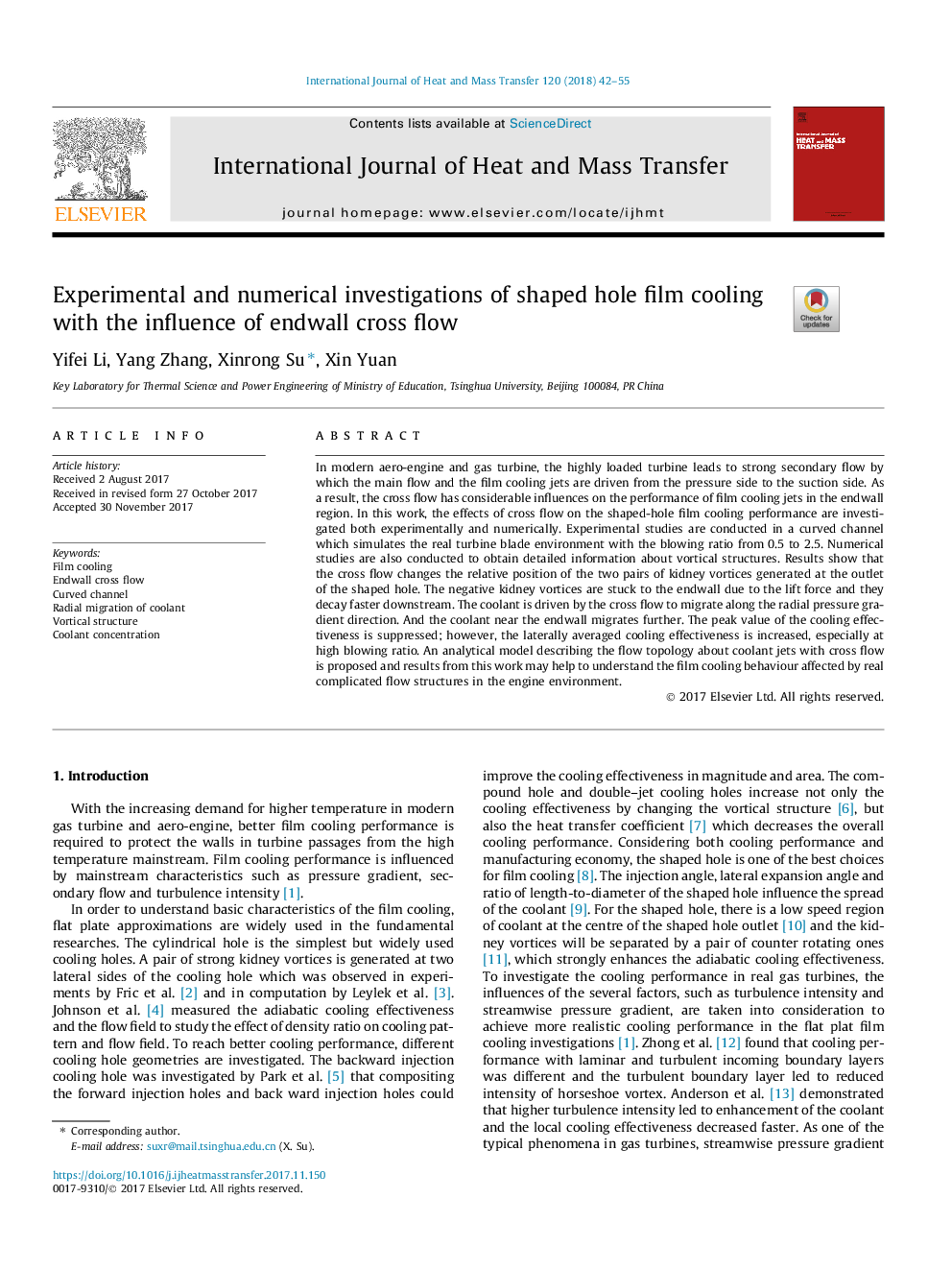| Article ID | Journal | Published Year | Pages | File Type |
|---|---|---|---|---|
| 7054518 | International Journal of Heat and Mass Transfer | 2018 | 14 Pages |
Abstract
In modern aero-engine and gas turbine, the highly loaded turbine leads to strong secondary flow by which the main flow and the film cooling jets are driven from the pressure side to the suction side. As a result, the cross flow has considerable influences on the performance of film cooling jets in the endwall region. In this work, the effects of cross flow on the shaped-hole film cooling performance are investigated both experimentally and numerically. Experimental studies are conducted in a curved channel which simulates the real turbine blade environment with the blowing ratio from 0.5 to 2.5. Numerical studies are also conducted to obtain detailed information about vortical structures. Results show that the cross flow changes the relative position of the two pairs of kidney vortices generated at the outlet of the shaped hole. The negative kidney vortices are stuck to the endwall due to the lift force and they decay faster downstream. The coolant is driven by the cross flow to migrate along the radial pressure gradient direction. And the coolant near the endwall migrates further. The peak value of the cooling effectiveness is suppressed; however, the laterally averaged cooling effectiveness is increased, especially at high blowing ratio. An analytical model describing the flow topology about coolant jets with cross flow is proposed and results from this work may help to understand the film cooling behaviour affected by real complicated flow structures in the engine environment.
Related Topics
Physical Sciences and Engineering
Chemical Engineering
Fluid Flow and Transfer Processes
Authors
Yifei Li, Yang Zhang, Xinrong Su, Xin Yuan,
